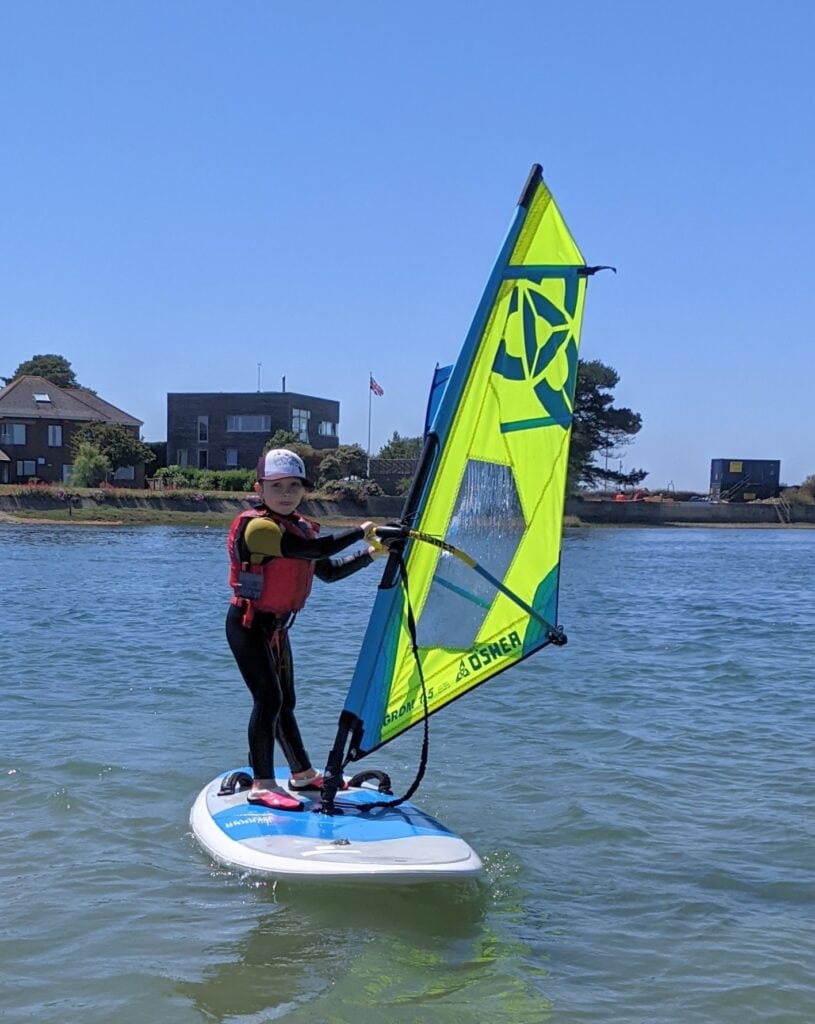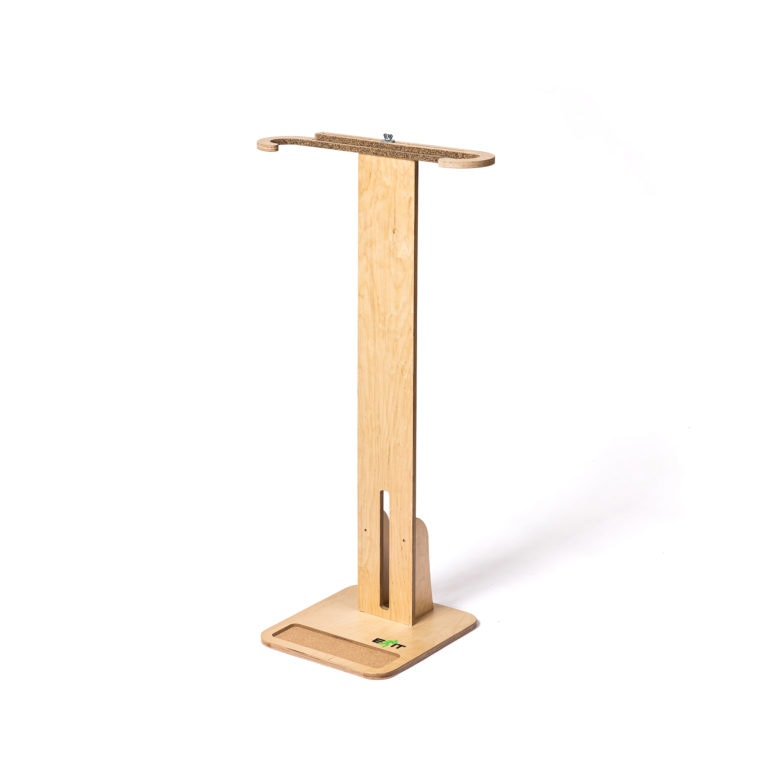Windsurfing is the daddy of windy boardsports. Before kitesurfing, wing foiling and downwinding windsurf was the focus discipline for when a blow puffed up. These days the windsurf profile isn’t quite as high. Yet there’s no question: it’s still as fun as it ever was (check out the vid below to see what we mean). Here’s our loose guide windsurfing in 2024.
Table of Contents
Exit accessories and windsurfing.
If you windsurf in the Northern Hemisphere, or anywhere away from the Tropics, you’ll be wearing rubber. A wetsuit is essential for keeping the chill off. With any breeze in the mix, wind chill is heightened – even during summer. Wetsuits are therefore safety gear as much as anything.
-
Surfboard Stand
€100.00 inc. VAT -
Wetsuit care Basic Bundle
Original price was: €89.80.€80.80Current price is: €80.80. inc. VAT
Prolonging the life of your wetsuit, as well as drying it efficiently, are two things Exit focused on when designing the XRail wetsuit hanger. We want to keep wetsuits out of landfill and in use for as long as possible. Plus, we want to get you back riding quick smart too. Check out the full range of Exit watersports accessories in the online shop here.
Windsurfing history.
The windsurfer as we know it was invented by a young Pete Chilvers in 1958. However, Hoyle Schweitzer and Jim Drake disputed Pete’s contribution which led to the notorious patent lawsuits of the 80s. Pete eventually won out and was proved the actual inventor. Although Schweitzer and Drake are now confirmed as mass marketing the sport and producing the original equipment that got riders into windsurfing.
Windfsurf’s bitter legal dispute set a new precedent for patency laws which stand to this day. Following this windsurfing’s industry didn’t exactly calm down. There have been multiple arguments and periods of upheaval within the sport. Although this has only ever been on the business side. Fortunately, the sport’s evolution has continued and everyday riders see many benefits in terms of equipment getting better and skills improving.
Windsurfing’s beginnings.
Initially windsurfing was all about longboards, triangular sails and light airs. The articulating motion of the rig (sail, mast and boom) was what set it apart from other sailing sports. And back in the 70s and 80s all stretches of water – inland or coastal – were ripe for windsurf fun.
In those days the sport boomed. It was seriously trendy to have windsurf kit strapped to the roof of your car. Hats off to the Schweitzer/Drake crew (WIndsurfing International) who marketed the activity incredibly well. Cool, trendy, healthy – what wasn’t to like?
The 80s golden era.
Some cite the 1980s as the golden era of windsurfing. This is when equipment was really pushed into the realms of performance. And new skills, similar to freestyle motocross, were debuted. Boards became shorter, planing speed was discovered, speed in general was bettered and bettered and the aerial antics we’re now accustomed to seeing started to take shape. Wave environments began to see more and more windsurfers entering the domain.
Professional windsurfing also began to grow. With high profile contests and big headline sponsors taking place worldwide. By the 90s, however, performance levels were being pushed to extreme lengths. This saw a decline in recreational windsurfing as everyday riders were put off by the costly and hard to use kit. Fortunately, some brands spotted this and set about making the discipline accessible once again. Nowadays windsurf is much easier to start and progress with.
How hard is it to windsurf?
In the right location, with the right equipment and a qualified instructor on hand windsurfing can take a few days to dial in the basics. Then it’s a case of working your way up towards using a harness, planing and getting in the footstraps. With a solid week of warm and breezy weather, under the watchful eye of a professional coach, this is achievable.
On from this, there’s a plethora of skills to learn, depending what you want to focus on. Some riders stick to freeriding and blasting back and forth. Whilst others fancy the challenge of racing. Others dedicate their session time to learning all manner of contorted freestyle tricks. And then there’s the wave arena. Which a large percentage of windsurfers see as the pinnacle of the sport. More recently you have the new school way of windsurfing – wind foiling, which makes use of modern hydrofoil technology.
Tuition and coaching.
As we’ve already mentioned, getting some windsurfing lessons is the best first step. A recognised centre or school will have all the right equipment on hand to get you through those first stages. An instructor will guide and give you that essential info to fast-track your way to the intermediate stage. And you’ll be safe.
Coaching doesn’t have to stop there, however. Whatever your windsurfing level instruction is a good idea. Bad habits can be gotten rid of and solutions found when/if plateauing. Many seasoned windsurfers still make good use of coaching.

Windsurfing equipment cost.
One elephant in the room with windsurfing is equipment cost. The sport has always been criticised for the price of equipment. Certainly new gear. And particularly as new kit can depreciate in value so quickly.
As it stands in 2024, however, it’s a buyer’s market. Used and secondhand bargains can be found in all the usual places. There’s a raft of quality windsurf gear available that won’t break the bank. So if you’re in the market for kit do your research and check out the classifieds.


Windsurf hotspots – UK and Ireland.
In the UK and Ireland there are many places to indulge in a bit of windsurf action. Here are just a few popular spots to look at. There are plenty more.
- Dollymount Strand – Dublin
- Carlingford Lough – Warrenpoint
- Tiree – Scotland
- Southport Beach – Merseyside
- Scarborough – North Yorkshire
- Hayling Island – Hampshire
- Poole Harbour – Dorset
- Daymer Bay – Cornwall
- Rhosneigr – North Wales

Final thoughts on windsurfing.
Being a windsurfer is an awesome choice. There’s nothing quite like blasting across the brine at full power. It may take a little time to learn from scratch. But that can be part of the appeal. If you choose to get involved we guarantee you’ll be loving it in no time.


